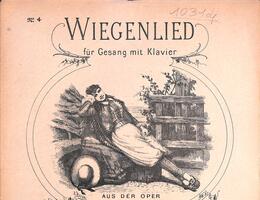Berceuse
Benjamin Godard’s masterpiece, the opera Jocelyn, composed on a libretto by Armand Silvestre and Victor Capoul (based on a poem by Lamartine) and premiered at the Théâtre de la Monnaie in Brussels on 25 February 1888, has remained famous thanks to its Berceuse, frequently performed and recorded by the finest voices of the twentieth century. The success of this piece is also attested by its multiple arrangements for various forces. Of these, the version for cello and piano, published in 1896 by Godard, has enjoyed special favour, perhaps because the timbre of the instrument is a particularly happy substitute for the tenor voice for which the aria was originally written. The Berceuse opens with a succession of chords that create a mysterious, expectant mood. Their unusual colour comes from the absence of a leading note, which gives the listener the impression that tonal tensions have been abolished. Its harmonies also confer on this opening a colour that is at once folklike and archaic – an effect also to be found in the first bars of ‘Mélisande’s song’ in Debussy’s Pelléas (‘Mes longs cheveux’, Act Three), through the composer’s use of the timbre of the harp combined with an extremely bare texture founded on a single note. Godard’s piece continues with a recitative-like section, heard twice, and followed by a cantabile passage. The former has a declamatory, suspensive character. The latter, set to the words ‘Oh, ne t’éveille pas encore’ (Oh, do not awaken yet) and based on a ternary rhythm typical of the berceuse and a simple melody coloured by suave harmonies, is notable for its effusive lyricism. Who would have thought that Godard added this ‘Méditation de Thaïs’ in extremis for the Paris revival of Jocelyn, to replace a much less attractive aria?


